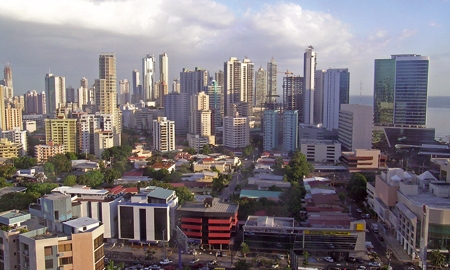Not so long ago, the Philippines was an Asian afterthought, with an economy often overlooked and a decrepit political system. Between the mid 1960s and the mid 1980s, productivity and economy growth had slowed to the extent that the country found itself in the midst of an economic crisis, due in large part to the so-called ‘crony capitalism’ of the Marcos administration. Much of the growth that the Philippines did enjoy during this period was financed mainly by foreign-currency borrowing, which in turn led to soaring external indebtedness.
Around the time President Marcos fled his country, the unemployment rate was at 8.3 per cent (and later rose to 11.4 per cent in early 1989), thus triggering a large exodus of Filipinos, who would later be known as overseas Filipino workers (OFWs).
Subsequent presidents attempted to turn the economy around, and consequently, the structure of the Philippine economy transformed over time, from a manufacturing-dominated one to a service-based one. Nevertheless, the country had a difficult time shaking off the chains of corruption and reviving a sense of political will.
Two years ago, Benigno S Aquino III was elected president under the banner of transparency and change. He has made true on his promises and has converted the Philippine economy into one of the most robust in the region.
“I invite all of you to ride this wave of optimism early and invest in our country.” President Benigno Aquino III |
In a speech at Euromoney’s Philippine Investment Forum on March 27, 2012, President Aquino eloquently summed up his administration’s success to date: “We are doing…things which were previously thought of as impossible: we are calling people to account; we are putting closure to the controversies that had sapped our institutions of their vigour and diminished their legitimacy in the eyes of our countrymen... We have reformed the manner in which we allocate and dispense public funds; we have thrown the book at the thieves; and we are collecting what the government is due.
“We have put an end to business as usual and proclaimed a country open for real business.
“And this, simply, has done wonders for our economy. Two years ago, for example, none of us could imagine the Philippine Stock Exchange index breaking the 4,000 barrier. Now, we have breached not just 4,000, but 5,000 as well. The PSEi closed at another record high just eleven days ago at 5,145.89 points. For those of you keeping score: That’s 21 record highs in the 21 months of our administration.”
He went on to mention the Philippines moving 10 places up from 85th to 75th in the World Economic Forum’s latest Competitive Index; the Japan External Trade Organisation’s naming it the best place to do business in Asia-Oceania in manufacturing and service; and how HSBC predicted that the Philippines will be the 16th largest economy in the world by 2050.
Goldman Sachs, for their part, has stated that the Philippines has the potential to become one of the top 10 countries that can greatly contribute to global growth within the next 10 years.
The Aquino administration has undoubtedly set the country’s economy on the right path for strong growth, and although GDP is expected to grow just 3.4 per cent this year (a small drop after a 3.7 per cent expansion in 2011), the Economist Intelligence Unit forecasts a strong recovery by 2016, with a 5.6 per cent growth, fuelled by private consumption.
Looking forward, President Aquino has identified three key sectors to be developed – agriculture, infrastructure and tourism – as they will have the largest impact on the economy and create much-needed jobs rapidly. Progress is well under way in all three sectors, making the President’s vision much more than mere electoral rhetoric.
The creation of the Philippine Business Registry, a new, speedy one-stop shop, combined with more clear-cut policies and other variables, has helped make investing in the Philippines more attractive, evident in the country’s emergence as the leading destination for foreign direct investments (FDI) in Asia. The Governor of the Central Bank, Amando Tetangco, highlights the favourable macroeconomic conditions and interest-rate settings. Total FDI for 2011 reached $1.26 billion, with future investments expected to increase in the coming years. For President Aquino, more FDI is essential, not only for boosting the economy, but also for job creation to stem the outward flow of Filipino workers.
“Investment has been coming in, but more is needed. Our Business Process Outsourcing industry is now the second largest in the world, behind India, with revenues of $8.9 billion in 2010, rising to a projected $11 billion in 2011. The Philippines also ranks fourth in the world in terms of shipbuilding,” said the President in November 2011.

0 COMMENTS